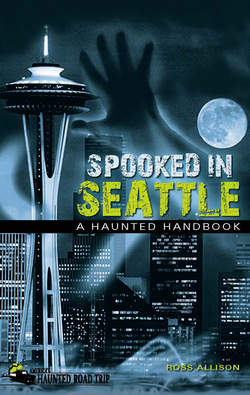Читать книгу Spooked in Seattle - Ross Allison - Страница 15
На сайте Литреса книга снята с продажи.
GREAT SEATTLE FIRE
ОглавлениеAll of these possibilities contributed to the city’s destruction as Seattle burned to the ground in just twelve hours! John Back snuck out of Seattle the next day unaware the hero he had become. This was a chance for the pioneers to fix all their city problems. So the citizens were back at work rebuilding their city the very next day. The fire leveled the city, giving the settlers a chance to rebuild and correct many of the mistakes they had made when building the first city. They could raise the city above sea level, correcting the drainage problems they had been living with for too long.
But starting over doesn’t mean people will do things correctly the second time around. With the conflict of how to rebuild, business owners and city officials could not agree on the new outline or direction for the city. So, Seattle’s complicated redesign was the consequence of two separate groups building the city at the same time, which resulted in raised streets and steep sidewalks.
DEATH AND HANGINGS
In a town where law and order had little control of troubled townsfolk, many unfortunate things occurred. Here are a few stories that show how mass hysteria and corruption contributed to the tales of death and murder. A few of these events very well may have left spirits behind to haunt our city streets.
April 1854—The body of a tradesman from Pennsylvania was found in a shallow grave on the beach of Lake Union. Three Native Americans were accused of the crime. Later that day, angry townspeople were able to retrieve two of the natives and proceeded to drag them to the corner of First and Main where a group of men quickly tried them and found them guilty. Then the mob hung the two from the tree nearby. Later a third Native American was able to have a fair trial, and it was discovered that he was an innocent man. So it was believed the other two men were most likely innocent as well.
October 1881—Seattle police officer David Sires was having a beer at James Smith Saloon, on Second and Washington when a gun went off. Even though he wasn’t in uniform, he investigated. When he exited the saloon, many witness pointed to a man who was running away. Office Sires pursued on foot and was able catch up to the gunman at the corner of Third and Yesler. At this time the running man warned Sires to stay back, but Sires continued pursuing him without identifying himself. The man shot Sires in the throat. At this moment a woman stepped out to see what the commotion was and found the officer lying on the ground and the gunman running away. Officer Sires died a few days later, but only after he admitted he had failed to announce himself as he gave chase. He became Seattle’s first police officer killed in the line of duty. The gunman was later identified as Ben Payne and was arrested after claiming the shooting was an accident. He had thought that Officer Sires was a robber. Payne was placed in jail until a trial could be set. Payne remained in custody until January 1882.
January 1882—George Reynolds, while strolling at Third and Marion, was robbed by two men at gunpoint. Refusing to hand over his belongings, he proceeded to go for his revolver only moments too late as the two gunmen both opened fire on him. George died from gunshot wounds to the chest, and the robbers hid as the citizens of Seattle began a citywide search for them. Four hours later both men were caught, but the locals wanted to take matters into their own hands. They took the two gunmen from the officers and dragged them to the site on James Street between First and Second, which is now Pioneer Square Park. There they hung the two men from the trees. It was then that a member of the mob shouted out for the hanging of Ben Payne. The crowd, still hungry for blood, stormed the jail and proceeded to fight off Sheriff Wyckoff and pull Payne from his cell. They then dragged him to the hanging trees where the two gunmen still swung. Payne cried out his innocence and stated to the mob, “You hang me, and you will hang an innocent man.” They hung him. It was said that the mob kept a reminder of the hangings to warn future criminals of what could happen.
June 1901—G.O. Guy drugstore at Second and Yesler was the site of an infamous shootout between former Police Chief William L. Meredith and John Considine, owner of the People’s Theater, a “box house,” which provided small acts, like magic shows, dancing, and occasionally sexual favors in the back rooms.
Feuding began between the two after charges were brought against Meredith for corruption, only after Considine would not give in to payoffs. Meredith then had to resign under the pressure of the investigation. Meredith proceeded to accuse Considine for impregnating a seventeen-year-old performer who worked in Considine’s box house.
